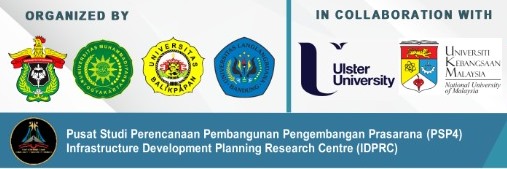The Impact Of New Samarinda Airport's Development
DOI:
https://doi.org/10.36277/icasgi.v1i1.25Keywords:
Airport's DevelopmentAbstract
Master Plan for the Acceleration of Indonesia's Expansion and Economic Development is a long-term initiative launched by the government of Indonesia. East Kalimantan has contributed to the implementation of these principles by enhancing the transportation infrastructure, particularly via the development of new representative airports. The presence of an airport is believed necessary for the effective operation of the Indonesian archipelago. Temindung Airport has become one of East Kalimantan's busiest airports, with passenger and cargo volumes well surpassing its annual design capacity. At least one aeroplane out of every 25 is also delayed due to problems in accommodating passenger capacity effectively. Samarinda Baru Airport was built as a result of the absence of preexisting air transportation infrastructure. If the economic benefits of the New Samarinda Airport Project can be shown, the government, donors, and community will provide their full support. The airport in Samarinda City will facilitate the organisation of educational programmes in hitherto inaccessible locations. It will also give opportunities for the economies of Samarinda, Bontang, and Sangatta to expand and flourish evenly. It is possible for universities in East Kalimantan to build new aviation and tourism-related technology modules and courses. The literature review offers evidence of the regional economic and non-economic benefits of an airport development project. The economic benefits of higher expenditure and employment creation contribute to a growth in the local GDP. Nonfinancial advantages include a good brand image for the city where the airport was built (Samarinda) and better access for adjacent villages' residents
Downloads
Published
How to Cite
Issue
Section
License
Copyright (c) 2022 PROCEEDING OF INTERNATIONAL CONFERENCE ON APPLIED SMART AND GREEN INNOVATION

This work is licensed under a Creative Commons Attribution 4.0 International License.

















